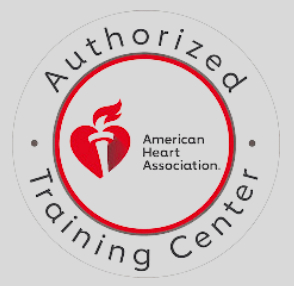Basically CPR is composed of 3 things – Airway, Breathing, and Compression, also known as ABC. ABC is a mnemonic term to remember the process of assessment during cardiac emergencies. However, the 2010 guidelines of CPR have been changed to CAB; Chest compression, Airway management, and Breathing.
C – Chest Compression
Chest compressions during CPR serve a critical function in maintaining circulation of oxygen-rich blood throughout the body, particularly to the vital organs such as the brain, heart, and lungs.
To perform CPR, firstly, ensure the safety of the area and assess the victim’s responsiveness. Kneel beside the victim, place the heel of one hand on the center of the victim’s chest and interlock your fingers, keeping your arms straight. Perform compressions at a rate of 100-120 per minute, allowing the chest to recoil fully between compressions. After 30 compressions, give two rescue breaths, ensuring the airway is open and observing chest rise. Continue cycles of compressions and breaths until help arrives or the victim shows signs of life. Regular training and practice are essential for proficiency in CPR.
Use correct compression tempo: Perform CPR that matches the tempo of the “Stayin’ Alive” song’s beat. The beat of the song is almost 100 beats per minute. It is a convenient way to get the rhythm and rate correct. Continue CPR until emergency help arrives.
Chest compression fraction: Chest compression fraction is the total percentage of resuscitation time when performed by the rescuer(s) during cardiac arrest. Chest compression fraction aims to minimize the interruption (intended or unintended) while delivering CPR. The target for chest compression fraction is to reach a minimum of 60%.
A – Airway Management
Sometimes a victim’s air tube gets struck by foreign objects which cause them to suffocate. Airway should be cleared in order to help patients breathe properly and pass oxygen into the body.
Here’s an overview of airway management techniques employed in BLS:
- Head Tilt-Chin Lift: Gently tilt the head back and lift the chin forward to open the airway. It is the first step in assessing and managing the airway.
- Jaw Thrust Maneuver: In cases where there may be a suspected cervical spine injury, the jaw thrust maneuver is preferred over the head tilt-chin lift. This technique involves grasping the angles of the patient’s lower jaw and lifting it forward, without moving the head or neck.
- Clearing the Airway: Check if the airway is blocked by tongue, foreign objects, vomit, food, or any object. Clear any objects that block the airway. If an object obstructing the airway is visible, remove it using your finger. If the obstruction is not visible, do not attempt removal, as it may worsen the situation.
B – Breath
Assessing breathing in basic life support (BLS) is crucial as it determines the need for ventilation support. Detecting inadequate breathing prompts prompt intervention, optimizing oxygen delivery to vital organs. Continuous assessment ensures timely adjustments, maximizing the chances of successful resuscitation and improving patient outcomes.
To give mouth-to-mouth breathing in basic life support, first lay down the victim on a flat hard surface and ensure the person’s airway is clear, tilt their head back, and lift their chin. Pinch the nostrils closed, place your mouth over theirs, and deliver two breaths, each lasting about one second, while watching for chest rise.
CPR on Infants (Age less than a year)
- Call 911
- Open airway by tilting head back
- Check breathing for up to 10 seconds
- Perform chest compressions (around 1.5 inches/4 cm deep)
- Give two rescue breaths after 30 compressions, covering mouth and nose
- Continue cycles of 30 compressions to 2 breaths until help arrives or the infant revives
CPR on Children
- Call emergency services
- Open airway, tilt head back
- Check breathing for no more than 10 seconds
- Give 30 chest compressions (about 2 inches/5 cm deep)
- Provide two rescue breaths after 30 chest compressions
- Repeat cycles of compressions and breaths
- Continue until help arrives or the child revives
CPR on Adult
- Call 911
- Open airway, tilt head back
- Check breathing for no more than 10 seconds
- Give 30 chest compressions (about 2 inches deep)
- Provide two rescue breaths after 30 compressions
- Repeat cycles of compressions and breaths
- Continue until help arrives or the patient revives
CPR on Pregnant Patients
- Call emergency services
- Position the patient on their left side to alleviate pressure on the vena cava
- Open airway, tilt head back
- Check breathing for no more than 10 seconds
- Give chest compressions if needed, focusing on the lower half of the sternum
- Provide rescue breaths if necessary, being mindful of the patient’s airway and abdomen
- Continue CPR until help arrives or the patient revives
Opioid Poisoning CPR for Healthcare Providers
- Yell, shake the person and check for responsiveness.
- Call for help. Activate the emergency response system if in a healthcare setting.
- Give naloxone if available. Naloxone is a medication that can temporarily reverse an opioid overdose. Give intramuscular or nasal naloxone per protocol.
- Start CPR if no breathing or just gasping. Provide 30 chest compressions then 2 rescue breaths. Use a bag-valve mask if available.
- Continue cycles of 30:2.
- Give rescue breaths slowly, about 1 breath every 5-6 seconds. Opioid overdoses suppress breathing, so effective ventilation is critical.
- If naloxone was given, the person may quickly regain breathing. Be prepared to manage agitated behavior that can occur when naloxone takes effect.
- Leave naloxone in place and continue CPR/rescue breathing until emergency responders arrive and the person is breathing regularly.
- Place in recovery position if breathing resumes.


